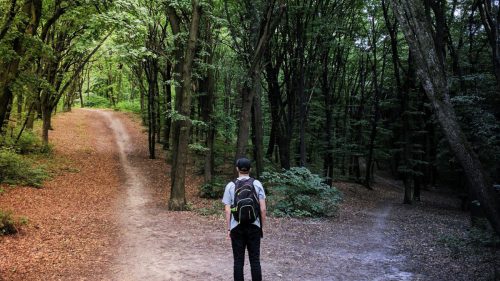


This is not a normal homeless shelter.
The first sign of that is the front gate. It’s massive and beautiful and was fashioned from steel by artist Albert Paley. It’s part of a collection of more than $4-million in donated fountains, sculptures, stained glass and paintings that adorn Orange County Rescue Mission’s Village of Hope in the Los Angeles suburb of Tustin, Calif.
“We want people who come here to experience beauty,” said executive director Jim Palmer. “We think that’s an important part of what we offer to our students.”
That’s another difference. The residents of the Village of Hope, a campus that houses nearly 300 formerly homeless people, are not “patients.” They are students. The name tags they wear are color-coded to denote freshmen, sophomores, juniors, and seniors. “Everyone here is learning and working,” Palmer said. That’s one reason that two years after the students graduate from the 18-month to two-year program, 85 percent of the graduates are still living independently. That success rate is much higher than other similar programs.
Palmer believes another reason for the success is the OCRM’s commitment to emphasize spiritual matters. “Physical and material brokenness is often symptom of spiritual brokenness,” he said. “We want to deal with root causes, not just symptoms.”
That commitment has a price. Palmer said OCRM does not take government funds. During my recent tour of the facility, we stopped in a beautiful chapel, complete with a cross and artfully designed and executed stained-glass windows. The building is clearly used for Christian worship and, in fact, a local church uses the building on weekends. Palmer told me that he could have gotten more than a million dollars to help with the construction of this building if he was willing to call it a “multi-purpose room” or an “auditorium.” He refused, and the government money went elsewhere. But the building retained its beauty and integrity as a worship space, and the decision sent a powerful message to students, staff, and donors.
The Village of Hope also has a dental clinic on-site, as well as a daycare facility staffed in part with students from nearby Concordia University. A garden grows herbs and spices used in the Village of Hope’s dining facility. In huge letters along the back wall of that facility is the expression: “Give a man a fish and you have fed him for a day. Teach a man to fish and you have fed him for a lifetime.”
And The Village of Hope is just one of nearly a dozen facilities OCRM has in Orange County, facilities that range from Restoration Roasters, a coffee shop, to the Double R Ranch, a working horse ranch where men, women and children who have been abused or abandoned, have – according to the Double R Ranch website — a “unique opportunity to work with animals. There are goats to be fed, eggs to be retrieved, pigs to be slopped and horses to be brushed. This amazing facility helps build self-esteem and gives its residents a safe place to learn how to care for others.”
Of course, OCRM hasn’t always had the robust facilities it has today. When Palmer became executive director 27 years ago, the Rescue Mission was $90,000 in debt. “That was more money that I could even conceive of then,” he said. “I promised God that if he would get us out of debt, I would not make any decisions that would put us back in debt.” Soon after, the debt was paid off, and all the facilities that make up Orange County Rescue Mission – now worth tens of millions of dollars – were all acquired or built debt-free.
(Palmer and OCRM are also committed to financial transparency. For a close look at the organization’s financial statements, click here.)
Jim Palmer says one of the most gratifying parts of his job is seeing the alumni of the OCRM’s various programs, who come back for special events. He says that when the students first come to the Village of Hope, they are often in crisis, with all kinds of physical, spiritual, and emotional problems. But seeing many of the former students years later, knowing that the crisis is behind them and they are leading transformed, productive lives, is what keeps him going.
In fact, outside Palmer’s office is a photo of the first “class” of students to go through the Village of Hope’s program. Palmer points to one of the men and says, “See that guy. He’s now on our staff.”
Image: YouTube
Have a Follow-up Question?
Want to dig deeper?
If you want to challenge yourself as many others have done, sign up below.
Webinars
Short Courses
Up
Next














